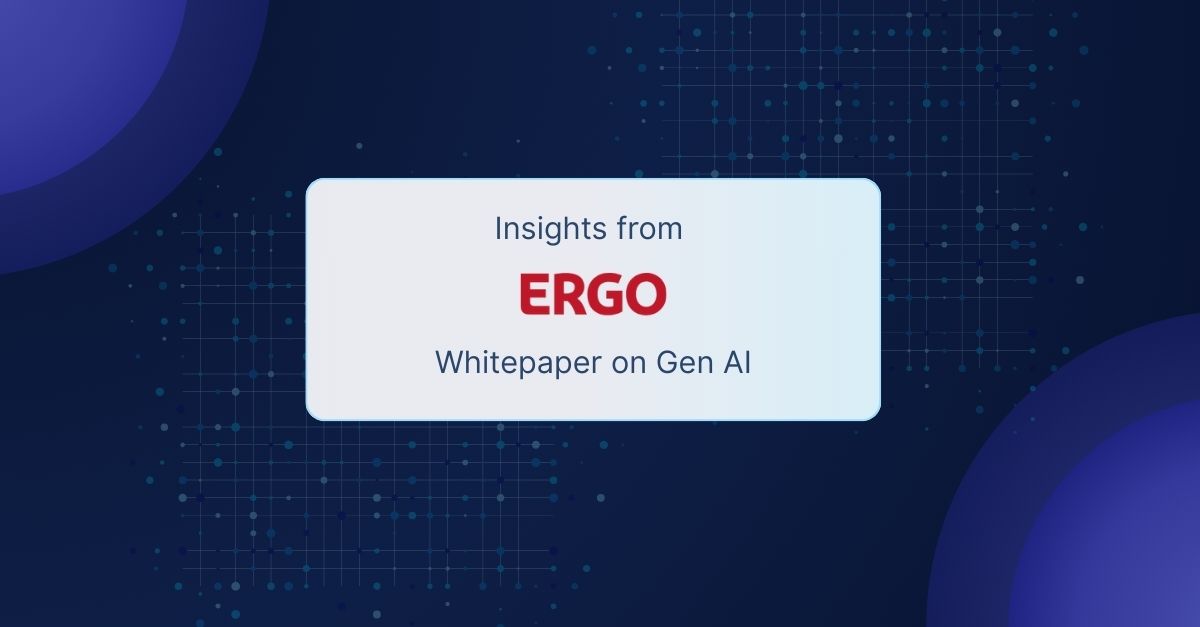Artificial Intelligence Progress and Multimodal Applications in the Insurance Industry
The latest whitepaper from ERGO explores the potential of multimodal Generative AI (GenAI) within the insurance industry, highlighting advancements, practical applications, and critical challenges. GenAI has evolved rapidly from text-based models to systems that seamlessly integrate text, images, audio, and video, unlocking new possibilities for the industry. The ERGO Innovation Lab has been at the forefront of developing and deploying GenAI systems such as ERGO GPT, providing over 30,000 employees with access to this technology.
Key advancements include improvements in multimodal processing, allowing GenAI models to simultaneously analyze and synthesize data across multiple formats. This capability supports applications such as automated claims assessments, where photos and videos enable quicker loss evaluations, and data-driven market analysis, which empowers strategic decision-making. ERGO GenAI enables video analysis for claims processing, drastically reducing processing time—one case study highlighted that an AI system analyzed 70,000 documents in just seven days, a process that would have taken nearly a year manually.
The whitepaper outlines several use cases where GenAI offers substantial benefits. For instance, automated video analysis assists in estimating the insured value of household contents, enabling faster and more accurate claims processing. In customer service, multimodal GenAI enhances personalization by providing agents with AI-generated summaries and suggested responses, optimizing real-time interactions. GenAI predictive capabilities, such as forecasting weather-related risks, allow insurers to improve risk assessment and proactively manage potential claims.
Despite these advantages, ERGO highlights significant challenges, including the need for robust data governance and transparency. Multimodal GenAI models, while powerful, can produce “hallucinations”—outputs based on incorrect or invented information—which pose risks in sensitive domains like insurance. To mitigate these issues, ERGO recommends a “human-in-the-loop” approach, where critical decisions remain under human oversight, enhancing accuracy and accountability.
The regulatory landscape is another critical consideration. European Union regulations, such as the EU AI Act, impose stringent AI transparency and fairness requirements, particularly for high-risk applications. ERGO emphasizes aligning with these standards and adopting explainable AI (XAI) to build user trust. To address adoption barriers, ERGO advocates for extensive training programs and a change management strategy to foster a culture of innovation and digital literacy among employees. The same considerations apply to insurers in the US; adopting transparent, explainable AI is essential to building trust. Overcoming adoption barriers can be frictionless when stakeholders can see model performance and collaborate in real time.
ERGO positions GenAI as a strategic imperative for the insurance sector, with the potential to drive efficiency, improve customer experiences, and support new business models. The whitepaper encourages insurers to invest in AI infrastructure, form strategic partnerships, and adopt comprehensive ethical guidelines to responsibly harness GenAI’s potential.
If you want to accelerate AI adoption and gain a competitive edge, we’d love to hear from you.



